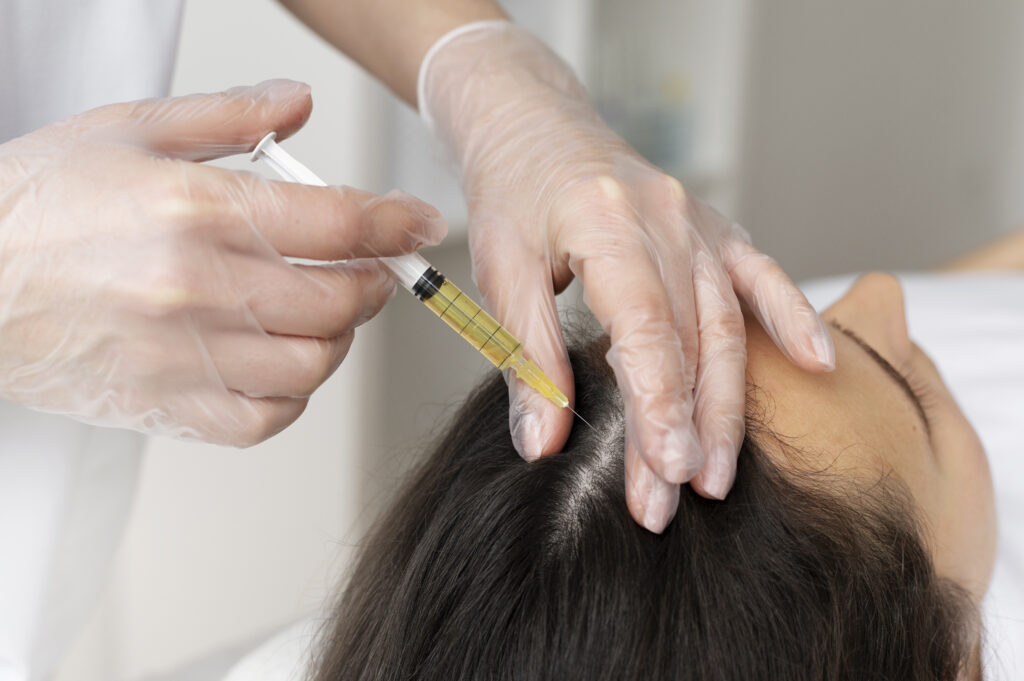
In the ever-evolving landscape of hair restoration, Platelet-Rich Plasma (PRP) has emerged as a promising and innovative solution for combating hair loss. This groundbreaking procedure taps into the body’s natural healing abilities to stimulate hair follicles and promote regrowth. In this in-depth exploration, we will unravel the intricacies of PRP for hair growth, shedding light on its methodology, efficacy, and potential benefits.
Understanding PRP:
Platelet-Rich Plasma is a concentrated form of plasma derived from the patient’s own blood. This plasma is rich in platelets, growth factors, and other bioactive proteins essential for tissue repair and regeneration. The PRP for hair growth procedure involves drawing a small amount of the patient’s blood, processing it to isolate the platelets, and then injecting this potent solution directly into the scalp.
The Science behind PRP and Hair Growth:
Platelets play a crucial role in the body’s natural healing process. When introduced into the scalp, PRP releases growth factors that stimulate dormant hair follicles, improve blood circulation, and enhance the overall health of the scalp. This regenerative process encourages the growth of new, thicker hair strands and can slow down or even reverse hair loss.
The Procedure Step by Step:
- Blood Draw: A small amount of blood, usually around 30-60 milliliters, is drawn from the patient.
- Centrifugation: The drawn blood is then placed in a centrifuge, a machine that spins rapidly to separate the components of the blood.
- Plasma Isolation: The centrifuge isolates the platelet-rich plasma from the rest of the blood components.
- Activation: The PRP is activated to release growth factors and other bioactive proteins.
- Injection: The activated PRP is injected into the targeted areas of the scalp using fine needles.
Efficacy and Results:
Research studies and clinical trials have shown promising results regarding the effectiveness of PRP for hair growth. Patients often report thicker, fuller hair and a reduction in hair loss after undergoing a series of PRP treatments. However, individual responses may vary, and it’s essential to set realistic expectations based on factors like the extent of hair loss and overall health.
Benefits and Considerations:
- Non-Invasive: PRP for hair growth is a minimally invasive procedure with minimal discomfort.
- Safety: As the procedure uses the patient’s own blood, the risk of allergic reactions or infections is significantly reduced.
- Natural Results: PRP promotes natural hair growth, avoiding the unnatural appearance sometimes associated with other hair restoration methods.
Conclusion:
Platelet-Rich Plasma for hair growth stands at the forefront of innovative solutions in the battle against hair loss. With its natural approach, minimal invasiveness, and promising results, PRP offers hope to individuals seeking effective and sustainable solutions for hair restoration. As advancements in this field continue, PRP remains a beacon of optimism for those looking to rejuvenate their locks and boost their confidence.

